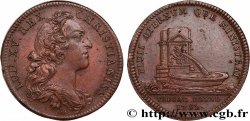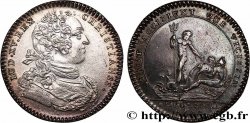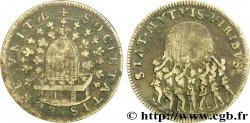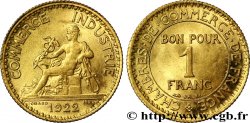You must signin and be an approved bidder to bid, LOGIN TO BID. Accounts are subject to approval and the approval process takes place within 48 hours. Do not wait until the day a sale closes to register. Clicking on « bid » constitutes acceptance of the terms of use of cgb.fr private e-auctions.
Bids must be placed in whole Euro amounts only. The sale will start closing at the time stated on the item description; any bids received at the site after the closing time will not be executed. Transmission times may vary and bids could be rejected if you wait until the last second. For further information ckeck the E-auctions F.A.Q.
NO BUYER'S FEE.
NO BUYER'S FEE.
| Estimate : | 35 € |
| Price : | 14 € |
| Maximum bid : | 20 € |
| End of the sale : | 29 July 2013 17:09:00 |
| bidders : | 4 bidders |
Type : COMMISSAIRES DES FRANCS-FIEFS
Date: n.d.
Metal : red copper
Rarity : R2
Coments on the condition:
Fissure au flan
Catalogue references :
Obverse
Obverse legend : LUDOVICUS XIIII D. G. FRA. ET. NAVA. REX.
Obverse description : Écus de France et de Navarre avec le double collier.
Obverse translation : Louis XIV, par la grâce de Dieu, Roi des Francs et de Navarre.
Reverse
Reverse legend : REGIA. IVRE. SUIS. PETIT. ECQUID. IVSTIUS ; À L'EXERGUE : POUR MRS LES COMMISSAIRES DES FRANC-FIEFZ.
Reverse description : Le roi assis sous un dais, tenant sceptre et main de Justice. Ce type est gravé sous le N°66 dans les planches de Feuardent.
Reverse translation : Le Roi demande à ses sujets s'il y a plus juste que le droit.
Commentary
Les franc-fiefs, au contraire des fiefs simples et des fiefs roturiers etaient des fiefs auxquels la coutume imposait un possesseur noble Une taxe particulière était levée, payable tous les vingt ans, sur ceux des franc-fiefs dont les propriétaires n'étaient pas nobles.








 Report a mistake
Report a mistake Print the page
Print the page Share my selection
Share my selection Ask a question
Ask a question Consign / sell
Consign / sell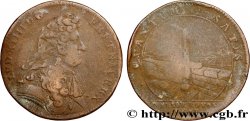
 Full data
Full data

